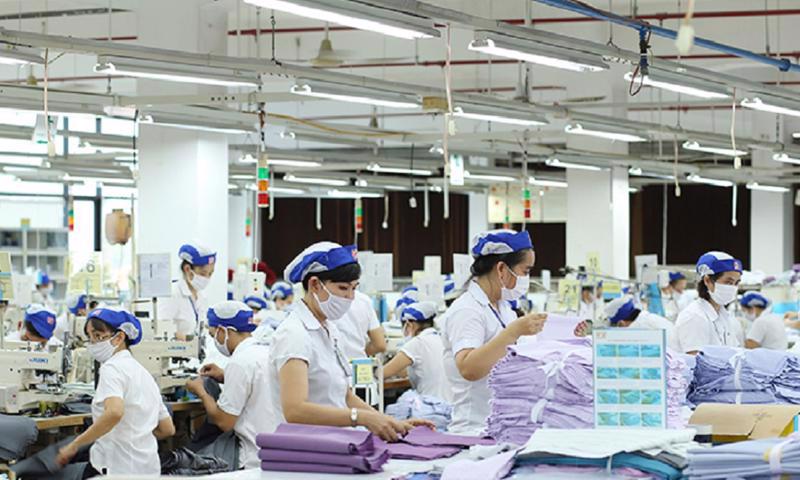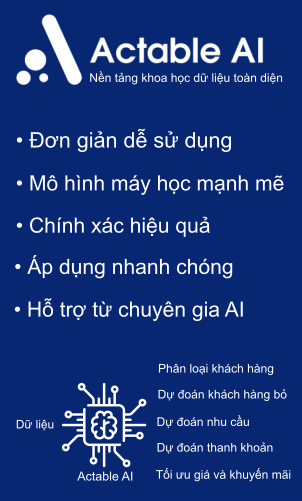Textile and garment exports up for continued growth in 2025
Vietnam’s textile and garment exports are in good shape as orders surge, with strategic market shifts, free trade agreements, and technological advancements setting the industry up for continued growth in 2025.

In the face of a tumultuous global economy, marked by unpredictable shifts, a sluggish trade recovery, a decline in global investments, the volatile rise and fall of oil prices, increasing shipping costs, and energy security issues, Vietnam’s textile and garment industry still managed to overcome the hurdles and reach the finish line in 2024 with impressive results across the board.
Mr. Vu Duc Giang, Chairman of the Vietnam Textile and Apparel Association (VITAS), reflected on a year that was anything but straightforward. “It was a year filled with uncertainty,” he said, recalling the uncertain mood in the first half of the year, with a sluggish export market showing few signs of improvement. But, in July, the tide turned, as orders flooded in, setting the stage for a strong finish. By the end of the year, the industry celebrated stellar export turnover of $44 billion. Thanks to this strong rebound, Vietnam’s textile and garment sector not only navigated through the challenging year but also emerged as a leader, posting the highest growth rate among the world’s major textile and garment exporters.
Threading the needle
In 2024, despite a whirlwind of challenges, Vietnam’s textile and garment industry recorded total export turnover of a projected $44 billion, marking an 11.26 per cent rise over 2023. Imports, meanwhile, are expected to hit $25 billion, a 14.79 per cent increase, leading to a trade surplus of $19 billion, up 6.93 per cent against 2023. Its performance elevated Vietnam to second place globally for textile and garment exports, just behind China and ahead of Bangladesh.
The US remains Vietnam’s most important export market, with an estimated $16.71 billion in turnover, up 12.33 per cent compared to 2023, accounting for nearly 38 per cent of total exports. Japan followed, with $4.57 billion, a 6.18 per cent increase, while the EU, South Korea, and China all showed steady growth. ASEAN also emerged as a key player, with exports expected to reach $2.9 billion, marking a solid 4.84 per cent rise.
VITAS reported that most textile and garment enterprises have already secured orders through the first quarter of 2025, with ongoing negotiations for the second quarter. However, one persistent challenge is that unit prices have not seen an increase. Despite this, Mr. Giang remains optimistic about the outlook for 2024, attributing the positive forecast to the industry’s ability to effectively shift export orders to Vietnam and quickly adapt to the demands of international markets. Moreover, the integration of advanced technological and automation solutions has played a key role in boosting workplace productivity.
A major player in Vietnam’s textile sector, the Vietnam National Textile and Garment Group (Vinatex) not only met its targets but exceeded them. Its consolidated revenue is estimated to have reached VND18.1 trillion ($724 million), which is 102.8 per cent of the 2023 target, while consolidated profit is expected to hit VND740 billion ($29.6 million), representing 137.5 per cent of the previous year’s figure.
Similarly, the Hoa Tho Textile - Garment Corporation’s revenue is projected at VND4.95 trillion ($198 million), surpassing its annual target by 10 per cent, with a profit of VND336 billion ($13.4 million), exceeding the plan by 53 per cent. The Phong Phu Corporation also hit its targets, with revenue expected to reach VND2.55 trillion ($102 million), up 20.7 per cent from 2023, and pre-tax profit projected at VND352 billion ($14.1 million), a 10.1 per cent increase compared to the previous year.
Significant turnaround
The remarkable success of Vietnam’s textile and garment industry in 2024 is the result of businesses’ proactive approach to navigating the challenges. According to Mr. Giang, companies have taken bold steps to adapt, adjusting production and business plans and fine-tuning strategies to align with market conditions. This included ramping up both domestic and international trade promotion efforts to expand their export markets, diversify customer bases, and broaden product offerings.
Mr. Cao Huu Hieu, General Director of Vinatex, highlighted the striking shift that took place after the turbulent first half of the year. What started as a challenging period turned around dramatically in the second half of 2024. Orders began to flood in, starting in July, and with them came rising prices. By now, many businesses in Vinatex have fully booked their orders through December, and some are already securing contracts for the first and even second quarters of 2025.
While this turnaround may seem fortuitous, Mr. Hieu pointed out that it was also driven by strategic flexibility in production management. Textile and garment companies actively sought new opportunities in emerging markets, leveraging new-generation free trade agreements (FTAs) that have come into effect. These FTAs, with many product lines enjoying zero-tariff rates, have opened the door to vast new markets. Moreover, the industry embraced modern management practices, including digital transformation and increased investment in automated machinery, all of which played a crucial role in driving the textile and garment sector’s success in 2024.
Positioned for growth
As the textile and garment industry faces favorable market trends and new opportunities from FTAs, Vietnam is setting its sights on an ambitious export target of $47-48 billion in 2025. However, experts caution that the road ahead remains uncertain, with challenges still on the horizon. The International Monetary Fund (IMF) projects global economic growth to stabilize at 3.2 per cent in both 2024 and 2025, slightly down from 2023’s result. This forecast includes a modest recovery in developed economies, where growth is expected to increase from 1.7 per cent in 2023 to 1.8 per cent in the following two years as inflationary pressures ease.
Vietnam’s economy is poised to maintain steady growth, with the US imposing additional tariffs on Chinese textiles, making Chinese exports more expensive. This shift presents a unique opportunity for Vietnam to capture some of the displaced orders, provided the country can meet strict origin requirements.
Mr. Hieu acknowledged that the challenges of 2025 will be no less daunting than those faced in previous years. While global economic uncertainties linger and competitors begin to rebound after a year of instability, the industry is seeing a strong recovery in orders. With this in mind, Vinatex has set an ambitious goal of increasing revenue by 6 per cent and profits by 10 per cent compared to 2024.
To reach these targets, Vinatex is focused on fostering greater collaboration within its group of companies to build a more competitive textile industry. The company is working to better integrate the garment sector with the dyeing and weaving units, positioning the garment sector as a driving force for production and investment in fiber and fabric. It is also ramping up its investment in technology and automation to boost productivity and reduce reliance on manual labor, while exploring opportunities to invest in smart factories across the group.
The Phong Phu Corporation, for its part, is aiming for VND2.6 trillion ($104 million) in total revenue and VND355 billion ($14.2 million) in profit for 2025. To meet these goals, Chairman Tran Quang Nghi explained that the company will focus on expanding automation, innovating products, and streamlining costs. It will also adapt its strategies to align with new market conditions, optimizing the workforce to maximize productivity and efficiency.
For Hung Yen Garment, 2025 holds great promise. With orders already secured through June, the company is aiming for VND616 billion ($24.6 million) in revenue and VND60 billion ($2.4 million) in pre-tax profit. Its goal is to increase its share of free-on-board (FOB) orders by 2-3 times compared to 2024, signaling a significant growth opportunity.
To address the ongoing challenges and reach these ambitious targets, General Director Pham Thi Phuong Hoa has outlined a strategy focused on stabilizing existing markets while tapping into new growth opportunities. The company plans to invest in upgrading its production equipment, reducing greenhouse gas emissions, conserving materials, and using eco-friendly resources. It will also prioritize developing its workforce, equipping employees with the skills needed to meet the demands of a rapidly-evolving market.
Recognizing the need for continuous innovation, Hung Yen Garment is committed to transforming itself by focusing on both human and technological resources. The company plans to integrate digital management tools for greater efficiency, aligning its operations with global trends. Rather than waiting for the perfect solution, Hung Yen Garment is taking proactive steps to implement digital technologies while attracting young, skilled talent in management and IT to drive the company’s future success.




















